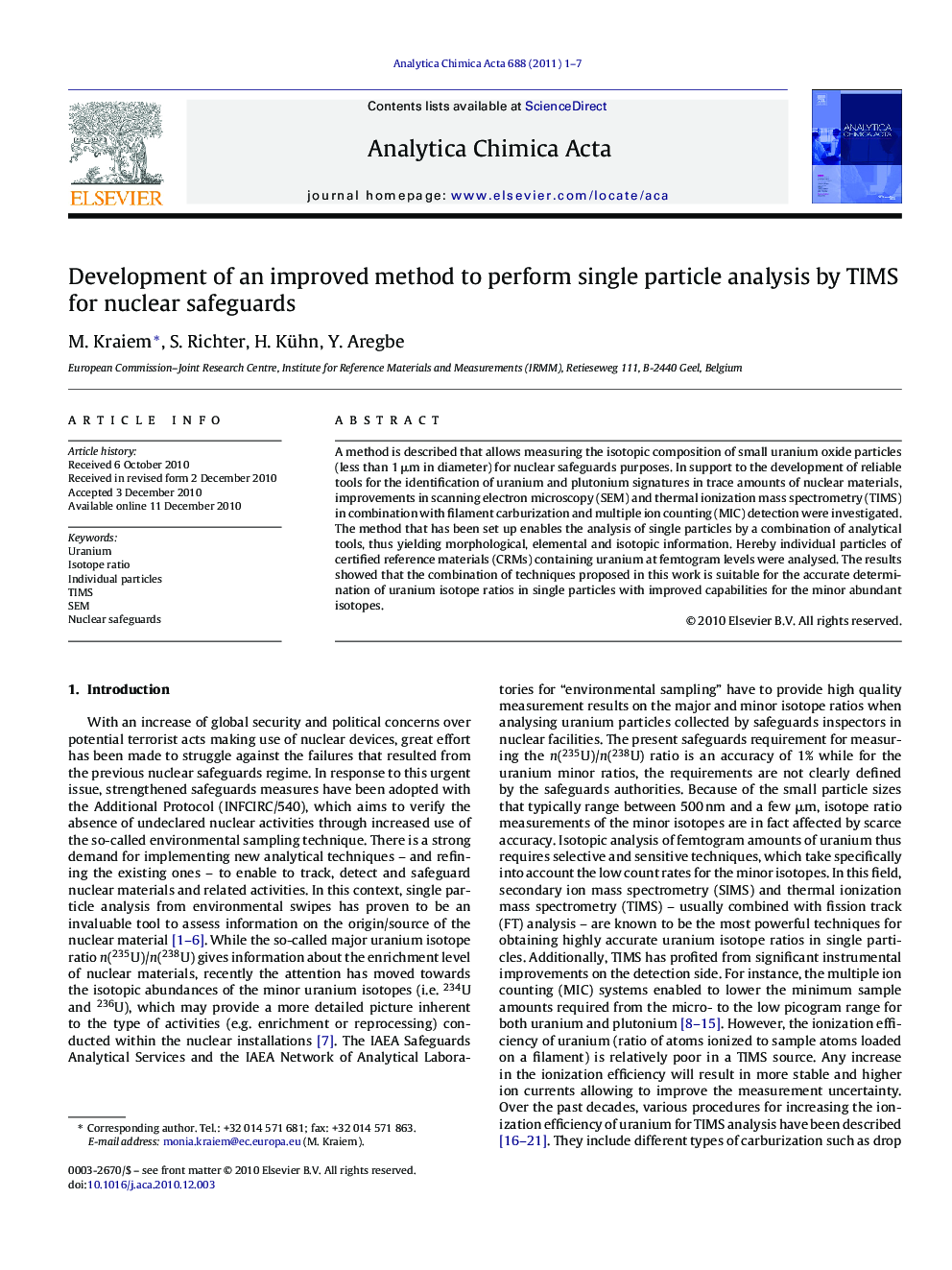| Article ID | Journal | Published Year | Pages | File Type |
|---|---|---|---|---|
| 1167655 | Analytica Chimica Acta | 2011 | 7 Pages |
A method is described that allows measuring the isotopic composition of small uranium oxide particles (less than 1 μm in diameter) for nuclear safeguards purposes. In support to the development of reliable tools for the identification of uranium and plutonium signatures in trace amounts of nuclear materials, improvements in scanning electron microscopy (SEM) and thermal ionization mass spectrometry (TIMS) in combination with filament carburization and multiple ion counting (MIC) detection were investigated. The method that has been set up enables the analysis of single particles by a combination of analytical tools, thus yielding morphological, elemental and isotopic information. Hereby individual particles of certified reference materials (CRMs) containing uranium at femtogram levels were analysed. The results showed that the combination of techniques proposed in this work is suitable for the accurate determination of uranium isotope ratios in single particles with improved capabilities for the minor abundant isotopes.
Graphical abstractThis paper describes an improved method for the accurate determination of the isotopic composition in single micrometer-sized (<1 μm) uranium oxide reference particles using in situ SEM micromanipulation and thermal ionization mass spectrometry (TIMS) combined with filament carburization and multiple ion counting (MIC) detection.Figure optionsDownload full-size imageDownload as PowerPoint slideResearch highlights▶ Accurate isotopic analysis of single sub-μm sized U particles by TIMS is performed. ▶ Filament carburization combined with MIC detection provides increased sensitivity. ▶ A baking procedure that employs a modified side filament reduces the background. ▶ Reliable measurement results are obtained also for the U minor abundant isotopes. ▶ The method is a valuable analytical tool for environmental and safeguards samples.
